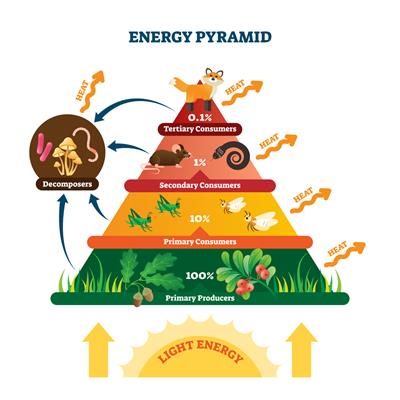
PUMPA - SMART LEARNING
எங்கள் ஆசிரியர்களுடன் 1-ஆன்-1 ஆலோசனை நேரத்தைப் பெறுங்கள். டாப்பர் ஆவதற்கு நாங்கள் பயிற்சி அளிப்போம்
Book Free DemoThe three basic components of an ecosystem:
A) Abiotic components
B) Biotic components and
C) Energy component
B) Biotic components and
C) Energy component
A) Abiotic Components
An abiotic component is a non-living part of an ecosystem that includes the environment's non-living, inorganic, physical and chemical factors.
Example:
Land, Air, Water, Soil, Calcium, Iron, Zinc, Copper etc.
B) Biotic Components
Biotic components are living components of an ecosystem, including microorganisms, plants, and animals. According to their functional attributes, biotic components can be classified as follows:
- Producers are self-nourishing elements of the ecosystem, i.e. they prepare their own food through photosynthesis. Hence, they are called Autotrophs. They are present on both land and water. E.g. green plants, certain bacteria and algae.
- Consumers are incapable of preparing their own food and depends on producers, directly or indirectly. Hence, they are called Heterotrophs. Consumers are further classified as primary, secondary and tertiary consumers.
- Primary consumers depend on producers for their food. They are solely herbivores. E.g. Cow, Horse, Zebra, Goat etc.
- Secondary consumers are small carnivores who prey on herbivores (primary consumers). E.g. Lion, Snake, Dogs, Cats, Birds etc.
- Tertiary consumers are top-level carnivores that prey on both herbivores and carnivores. E.g. Owl, Crocodile, Sea lions, Polar bear etc.

Energy components:
For the biosphere as a whole, Sun is the ultimate source of energy. Through various components in the ecosystem, solar energy gets transformed into other forms. The producers, consumers and decomposers contribute a lot to the energy flow in an ecosystem.